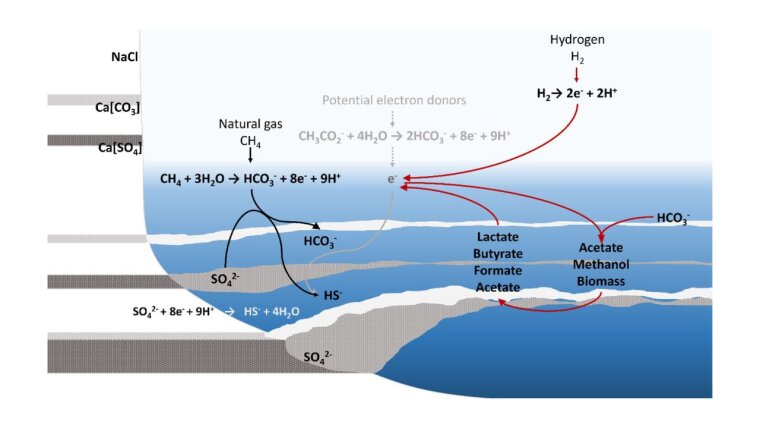
To reach governmental goals of reduced climate gas exhaust, technologies for improving the production, storage and distribution of renewable energies are necessary. An example is underground storage of hydrogen gas, biomethane and hydrogen-methane gas mixtures, which can be produced with renewable energies and from biomaterial.
Subsurface reservoirs such as aquifers and salt caverns are suitable sites for short- and long-term storage of these gases. However, the potential oxidation of stored hydrogen by lithoautotrophic microorganisms is an important but less studied aspect.
It is assumed that indigenous sulphate-reducing microorganisms oxidize available hydrogen, and with that produce hydrogen sulphide which in turn leads to corrosion of facility infrastructure and pollution of the gases that are stored.
In saline aquifers and salt caverns indigenous microorganisms must deal with elevated salinity. Microbial proliferation is a function of efficient strategies for osmoadaptation. Currently, two strategies are reported and either rely on accumulation of salt ions in the cytoplasm or uptake and/or synthesis of small organic molecules.
I am interested in investigating extremophiles in natural and artificial systems with reduced water activity and elevated salinity by using stable-isotope probing (SIP, nanoSIMS, ICPMS) and next-generation sequencing technologies.